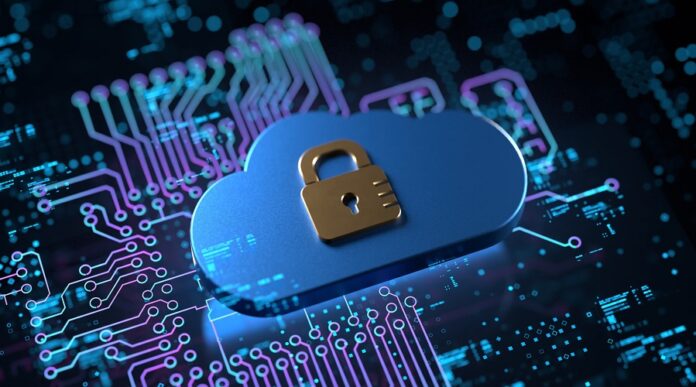In this digital age, cyber threats have become increasingly sophisticated, and one of the most significant menace is ransomware. Ransomware is a type of malicious software that encrypts your files and demands a ransom payment to unlock them. It can wreak havoc on individuals, businesses, and organizations, leading to data loss, financial losses, and reputational damage. In this article, we will delve into effective strategies to prevent ransomware and secure your data from cybercriminals.
What is Ransomware?
Ransomware is a form of malware that encrypts files or locks users out of their devices, rendering them inaccessible until a ransom is paid to the attackers. It typically enters a system through malicious email attachments, infected websites, or software vulnerabilities. Once ransomware takes hold, it can quickly spread throughout a network, affecting all connected devices.
How Ransomware Works
Understanding how ransomware works is crucial in devising effective prevention strategies. The malware encrypts files using a strong encryption algorithm, making it virtually impossible to decrypt without the unique decryption key held by the attackers. After the infection, the victim receives a ransom note demanding payment, often in cryptocurrency, in exchange for the decryption key.
Common Types of Ransomware
There are several types of ransomware, each with its own methods and targets. Some well-known variants include WannaCry, Ryuk, Maze, and Locky. Each of these ransomware strains employs different techniques to infiltrate and exploit systems, making it important to stay informed about emerging threats.
Consequences of Ransomware Attacks
The consequences of falling victim to a ransomware attack can be severe. Losing access to crucial data can disrupt business operations, lead to financial losses, and damage an individual’s personal life. Additionally, paying the ransom doesn’t guarantee that the attackers will provide the decryption key or refrain from future attacks.
Steps to Prevent Ransomware
1- Keep Software Up to Date
Regularly update all software, including operating systems, antivirus, and applications. These updates often include patches that address known vulnerabilities, making it harder for ransomware to exploit security loopholes.
2- Install Antivirus and Anti-Malware Software
Deploy reputable antivirus and anti-malware software to detect and block potential threats before they can infect your system.
3- Regular Data Backups
Frequently back up your data to an external storage device or a secure cloud service. In the event of a ransomware attack, you can restore your files without paying the ransom.
4- Be Cautious with Email Attachments and Links
Exercise caution when opening email attachments or clicking on links, especially if they come from unknown or suspicious sources.
5- Use Strong Passwords and Enable Multi-Factor Authentication (MFA)
Create strong, unique passwords for all accounts and enable multi-factor authentication to add an extra layer of security.
6- Educate Employees and Family Members
Educate employees, family members, or anyone using your network about the dangers of ransomware and how to identify potential threats.
7- Limit User Access and Privileges
Restrict user access to critical systems and data only to those who require it for their roles.
8- Secure Remote Desktop Protocol (RDP)
If using RDP, ensure it is properly configured and protected with strong passwords and limited access.
9- Monitor Network Traffic
Monitor network traffic for unusual activities and employ intrusion detection systems to detect potential ransomware infections.
10- Utilize Firewall Protection
Enable firewalls to control incoming and outgoing network traffic, blocking unauthorized access.
11- Employ Email Filtering and Spam Detection
Utilize email filtering and spam detection mechanisms to prevent phishing emails from reaching your inbox.
12- Beware of Malvertising
Be cautious when visiting websites and avoid clicking on suspicious ads that may lead to ransomware infection.
13- Regular Security Audits and Penetration Testing
Conduct regular security audits and penetration testing to identify and address potential vulnerabilities.
14- Stay Informed About Current Ransomware Trends
Stay informed about the latest ransomware trends and techniques to adapt your prevention strategies accordingly.
What to Do If Your Computer Gets Infected
In the unfortunate event of a ransomware infection, follow these steps:
- Isolate the infected device from the network to prevent further spread.
- Report the incident to law enforcement and seek professional help.
- Do not pay the ransom immediately, as there is no guarantee you’ll regain access to your data.
FAQs
Is paying the ransom the best option to recover my encrypted files?
Paying the ransom is discouraged, as it encourages cybercriminals and there’s no guarantee you’ll get the decryption key.
Can ransomware infect mobile devices as well?
Yes, ransomware can target and infect mobile devices, so it’s crucial to protect them too.
Are free antivirus programs effective in preventing ransomware?
Free antivirus programs can provide some level of protection, but premium solutions often offer better security features.
Can ransomware affect cloud-based backups?
Yes, ransomware can target and encrypt files stored in cloud-based backups if they are connected to the infected device.
Is it possible to track down the attackers behind a ransomware attack?
It can be challenging to trace ransomware attackers due to their use of sophisticated techniques and anonymity tools.
How does ransomware infiltrate a system?
Ransomware can enter a system through various means, including phishing emails, malicious attachments, infected websites, and vulnerable software.
What happens if you pay the ransom?
Paying the ransom does not guarantee that you will regain access to your data. In some cases, victims never receive decryption keys even after payment, and it encourages cybercriminals to continue their illicit activities.
Is it possible to decrypt files without paying the ransom?
In some cases, cybersecurity experts have been able to develop decryption tools for certain ransomware variants, allowing victims to recover their files without paying the ransom. However, this is not always possible.
How can businesses protect against ransomware?
Businesses should implement robust cybersecurity practices, conduct regular employee training, and invest in advanced security technologies to safeguard against ransomware attacks.
Conclusion
Protecting your data and security from ransomware is a critical responsibility in today’s digital landscape. By following the outlined preventive measures and staying vigilant, you can significantly reduce the risk of falling victim to these malicious attacks.
Related Article:
How to Prevent the Police from Tracking Your Phone
How Can You Protect Yourself from Social Engineering











